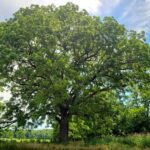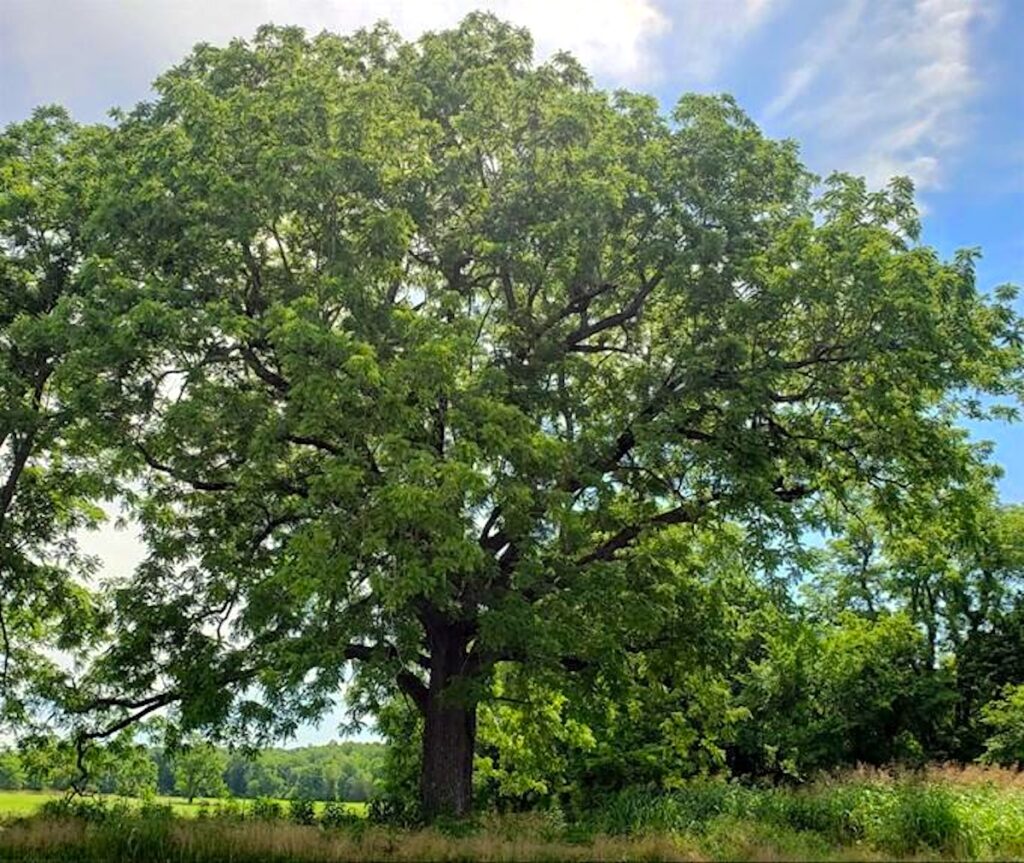
By Eva Hoffman
Belmont’s shade tree committee, in conjunction with the Department of Public Works (DPW) and the tree warden, has developed a list of preferred native trees for planting by the town on public property, for contractors planting street trees, and for residents who are seeking information for their gardens.
The Belmont Preferred Trees List contains information on the size, characteristics, and growing conditions for each species. Twenty of the 45 recommended trees are marked “street tree,” which means they can be planted between the sidewalk and the street. But they aren’t exclusively street trees. They are adaptable, reliable trees that also work well in yards and parks.
To compile the list, committee members consulted a variety of sources, including municipal guides from Cambridge, Arlington, and Plainfield, Massachusetts, as well as the state Department of Conservation and Recreation (DCR). DCR was an essential source for identifying invasive and prohibited trees to omit from the list such as the black locust. Publications from the Wild Seed Project and the Native Plant Trust, two New England organizations that specialize in native plantings, revealed a wealth of native species to choose from.
We chose to focus on native trees and shrubs because they support our local ecosystem. All trees on the list are native to the United States, and most are native to Massachusetts.

Black walnut—a tree featured in the Belmont Preferred Tree List—Fulton County, AR. Photo: Arkansas Department of Agriculture
“We need more trees like the native oaks, which support hundreds of native caterpillars and insects that are a food source for native wildlife, versus the non-native ginkgo trees, which support fewer than 10.”
Native plants have symbiotic relationships with native wildlife as habitats and as irreplaceable food sources for insects and birds. Grow Native Massachusetts offers a list of keystone plants, defined as “plants that host a significant number of caterpillar species and therefore have an outsize impact on the functioning of food webs in their ecosystems.”
Lucia Gates, a longstanding member of the Shade Tree Committee, says, “We need more trees like the native oaks, which support hundreds of native caterpillars and insects that are a food source for native wildlife, versus the non-native ginkgo trees, which support fewer than 10.”
The preferred trees project began in early 2023, shortly after the town completed its first official town wide tree inventory. In 2022, the DPW contracted with Davey Resource Group to identify and map all trees along our streets in public parks, around public buildings, and in cemeteries. More than 8,000 trees were identified, with an estimated value of $17.3 million. The inventory’s findings and recommendations inform the preferred tree list.
Michael Santoro, Belmont’s new tree warden, says, “The town tree inventory indicated that 45% of trees on town property are maples, so we need to diversify our future plantings.” Having many different types of trees planted in town reduces the risk posed by pests and diseases. Our goal is to limit any one species to 10% of the town’s tree canopy and any one genus to 20%.
The Belmont Tree Inventory is available on the town website under the Department of Public Works. If you’re choosing a tree to plant and are interested in seeing a specimen, you can search for a species in the inventory to see whether it’s growing on public property in Belmont and, if so, where you can view it.
Local nurseries sell native plants and shrubs. Some examples are Bigelow Nursery, Butterfly Effect Farm, Kings Tree Farm, Native Plant Trust, Northeast Nursery, and Weston Nurseries.
We hope Belmont’s preferred trees list will help you decide which trees to plant and where to plant them.
Eva Hoffman is the chair of Belmont’s Shade Tree Committee.


Sorry, the comment form is closed at this time.